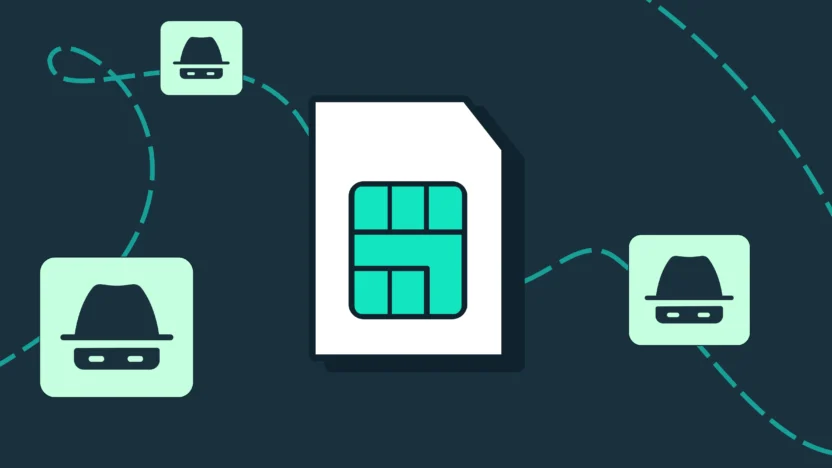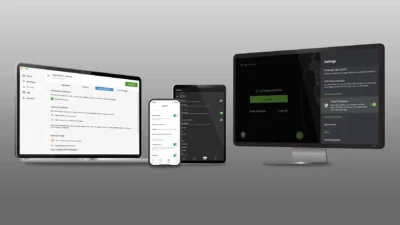A SIM swap scam isn’t sci-fi—it’s a real threat that can wreak havoc on your finances, privacy, and overall digital life. Here’s how it works: the attacker impersonates you and convinces your mobile operator to transfer your phone number to a SIM card they control. With this, they gain access to your calls and SMS, including security codes from two-factor authentication (2FA). And trust me, that’s exactly the key they need to access your bank accounts, email, or social media.
Once the scammer completes their trick, you’re cut off—your phone loses signal, and you can’t make calls, send SMS, or access any accounts linked to your number. The problem?
This process is something mobile operators normally use for legitimate situations, like when you get a new phone or lose your SIM card. Unfortunately, scammers have figured out how to exploit this routine.
How Does a SIM Swap Work?
The scam begins where most cyberattacks do—with information gathering. The attacker needs to know your name, address, date of birth, and, of course, your phone number. Thanks to social media and public databases, getting this information isn’t hard. And if you’ve posted photos from your birthday party on Facebook, you’re making their job even easier. These are exactly the kinds of details scammers love.

Once they have all the necessary info, they call your mobile operator and put on their “acting performance.” They claim they lost their SIM card or their phone broke. They pass the security checks using the information they gathered, and the operator deactivates your old SIM and activates a new one—the one the attacker controls.
What happens next? The attacker has access to your calls, SMS, and can request password resets for different accounts. They receive the verification codes, change the passwords, and suddenly have control over your email, bank accounts, and even your Instagram. It only takes a few minutes for them to empty your bank account or destroy your social media reputation.
Protect Your Data Online with a VPN
A SIM swap scam is just one of many threats targeting your personal data online. In addition to protecting your phone number, it’s crucial to safeguard your internet connection as well. A VPN (virtual private network) encrypts your data, hides your IP address, and shields you from tracking and cyberattacks.
With a VPN, you can browse the internet securely, use public Wi-Fi networks, and avoid risks such as password theft, financial data breaches, or unauthorized access to sensitive accounts. Choose a trusted VPN service and take control of your online privacy.
🔐 Stay one step ahead of scammers. Explore VPN protection options and connect to the internet safely, anytime and anywhere.
How Can You Tell You’re a Victim of a SIM Swap?
Here are the warning signs you shouldn’t ignore:
1. Loss of Signal
If your phone suddenly shows “No Service” and restarting it doesn’t help, you should be suspicious. If the issue lasts for hours or even days, don’t wait—call your mobile operator right away.
2. Suspicious Messages and Notifications
Are you receiving SMS about password changes or a new SIM card activation, even though you didn’t request anything? That’s a red flag you can’t ignore.
3. Inability to Log In to Online Accounts
If you know your password is correct but still can’t log in, the attacker may have already changed it.
4. Unusual Call Activity
Have you noticed outgoing calls you didn’t make or incoming calls from unknown numbers? Someone might be messing with your number.
5. Unusual Financial Transactions
Once the attacker gains access to your bank accounts, they can initiate transfers or make purchases on your behalf. Keep an eye on your bank statements!
6. Missing 2FA Codes
If you’ve stopped receiving SMS with 2FA codes, the attacker may be intercepting them through their own SIM card.
Risks of a SIM Swap Attack
You might think losing access to your phone number isn’t a big deal, but it’s much worse than it seems. Here’s what a SIM swap can cause:
- Identity Theft: The attacker can impersonate you, take out loans, open credit accounts, or even commit crimes in your name.
- Financial Losses: Access to your bank accounts means the attacker can transfer funds, make unauthorized payments, and drain your savings.
- Loss of Privacy: SMS messages, photos, contacts—the attacker can go through your phone and extract sensitive information.
- Damaged Reputation: Imagine the attacker sending messages to your friends or posting on your Facebook. They could ruin relationships or your professional image.
- Psychological Impact: The feeling of having your privacy violated, combined with stress and anxiety, can take a toll on anyone.
What to Do If You’re a Victim of a SIM Swap
Don’t waste time. Acting fast can minimize the damage:
- Contact Your Mobile Operator Immediately
Ask them to verify whether your SIM card was transferred. Request that the newly issued SIM be blocked and your original number restored. - Change All Passwords
Start with your email, bank accounts, and social media. Enable app-based 2FA wherever possible (instead of SMS). - Inform Your Bank
If you suspect your financial accounts are compromised, notify your bank. They can temporarily freeze your account to prevent further damage. - Scan Your Devices for Malware
Conduct a deep scan using antivirus software. Attackers may attempt to install malicious software to gather more information. - Report the Incident to Authorities
If the attack is severe, report it to your local cybercrime unit. Depending on your country, this could be the Federal Trade Commission (FTC) in the U.S. or Action Fraud in the UK.
How to Protect Yourself From a SIM Swap
To avoid finding yourself in this situation, follow these security tips:
- Set Up a Security PIN With Your Mobile Operator
Many providers allow you to add an extra PIN or passcode required for making changes to your account. - Be Cautious of Phishing Attacks
Don’t respond to suspicious emails or messages asking for personal information. - Use Authentication Apps
App-based 2FA (like Google Authenticator or Authy) is safer than SMS-based versions, as the codes are generated directly on your device. - Use Strong, Unique Passwords
Avoid using easily guessable passwords and don’t reuse them across multiple platforms. Create passwords with a mix of uppercase and lowercase letters, numbers, and symbols. - Limit What You Share Online
The less personal information you share online, the less ammunition attackers have to impersonate you. Think twice before posting details like your address, phone number, or birthdate.
SIM swap is a sneaky method that can turn your comfortable digital life into a nightmare. But prevention is possible—it just takes a little awareness, smart habits, and proper account security.
Don’t underestimate it, and think of it as an investment in your peace of mind. 🌐









